Abstract
The new pleuromutilin derivative 81.723 hfu is extremely active against gram-positive organisms such as streptococci, staphylococci, and against mycoplasmas. A number of Shigella, Klebsiella, and Escherichia coli strains were also found to be quite susceptible to this new agent, whereas other gram-negative organisms like Pseudomonas aeruginosa, Proteus species, and Alcaligenes faecalis proved to be naturally resistant to 81.723 hfu. The new compound acts bacteriostatically. Bactericidal effects have been observed only at concentrations which are 100-fold higher than the minimal inhibitory concentrations. The new antibiotic is well tolerated in all animal species tested so far and has been successfully used in the treatment of experimental infections with gram-positive organisms and with mycoplasmas in mice and rats. Resistance against this new compound arose gradually in all microorganisms investigated. It is noteworthy that the rate at which resistance against 81.723 hfu emerged in mycoplasmas (Mycoplasma gallisepticum and Mycoplasma hyorhinis) was significantly slower than the corresponding rate at which resistance against tylosin tartrate appeared. Mycoplasma strains which became insensitive to 81.723 hfu were also resistant to tylosin tartrate, whereas mycoplasmas which developed resistance against tylosin tartrate, although less sensitive to 81.723 hfu than wild-type strains, were still eliminated by this drug. In a strain of Klebsiella pneumoniae, complete cross-resistance was observed between the pleuromutilin derivative on one hand and lincomycin and erythromycin on the other. Modest degrees of cross-resistance were also observed with chloramphenicol. However, it appears unlikely that the latter phenomenon is sufficiently pronounced to affect treatment with either antibiotic.
Full text
PDF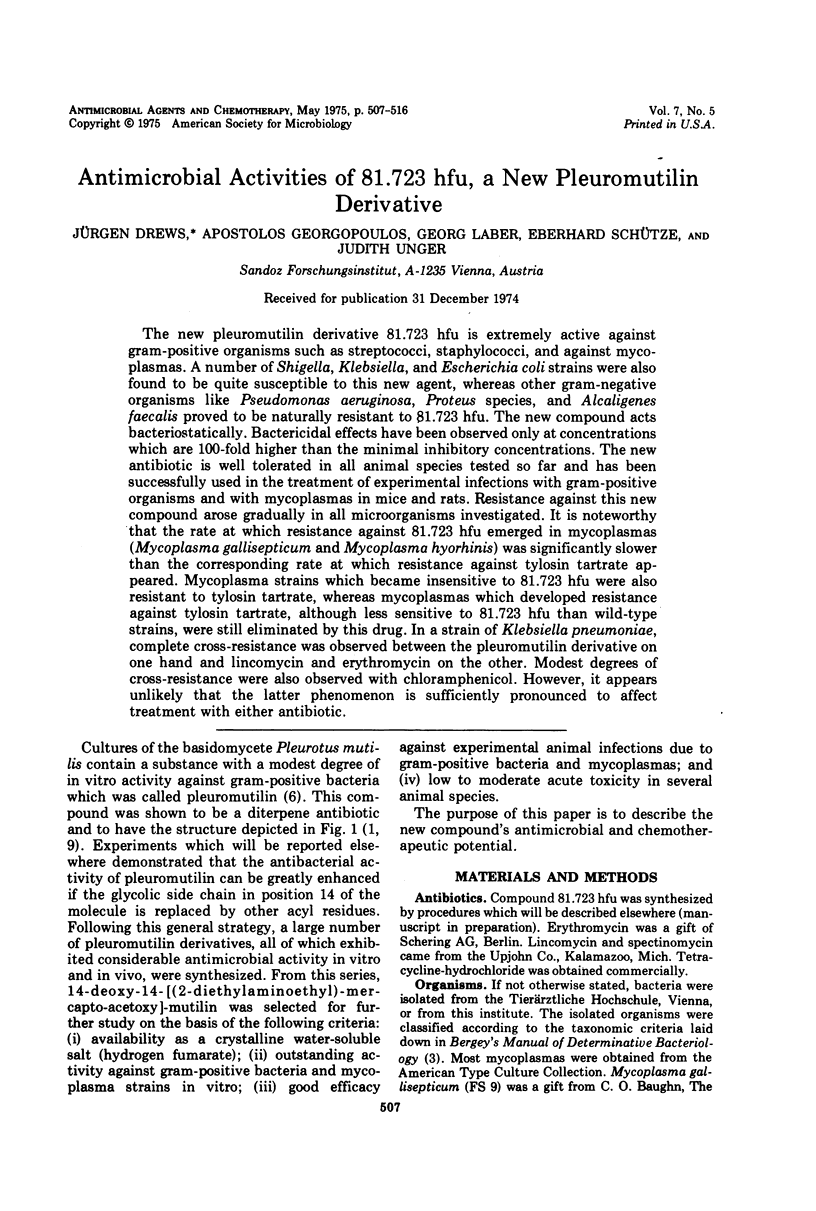

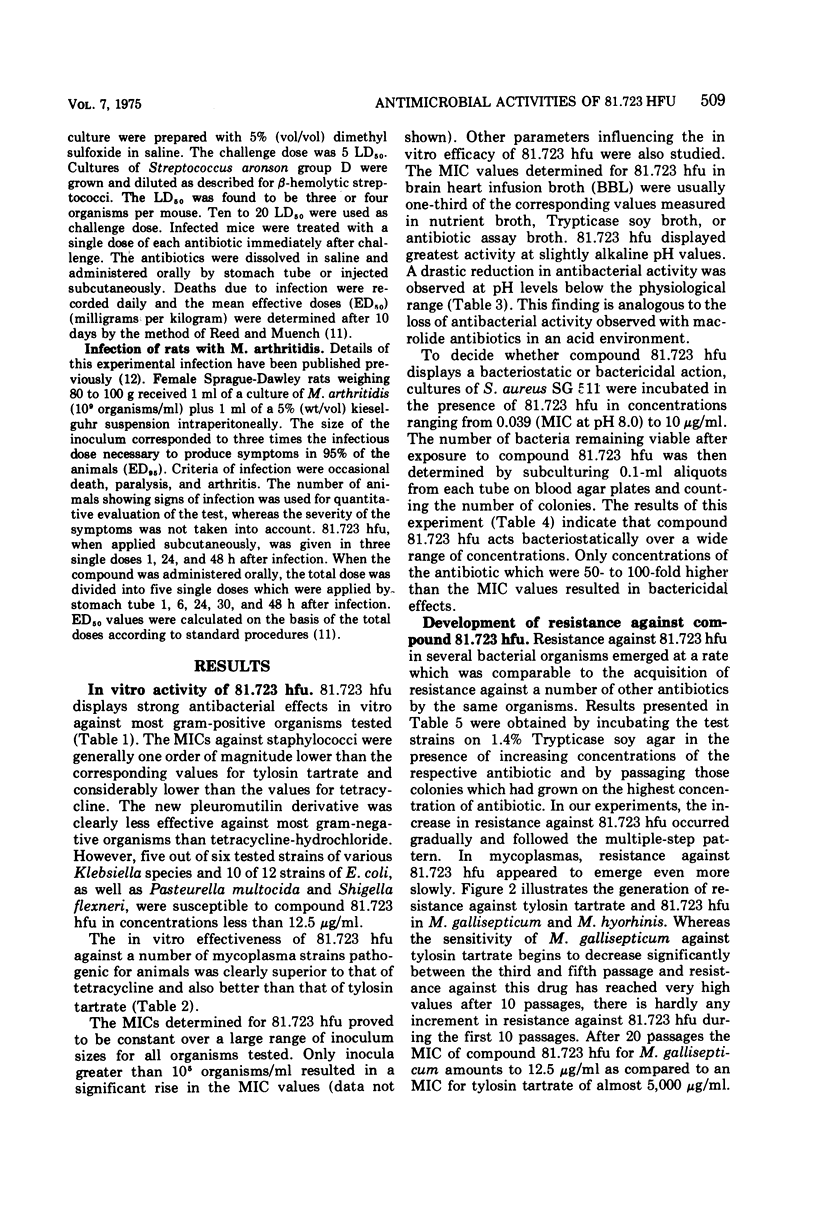

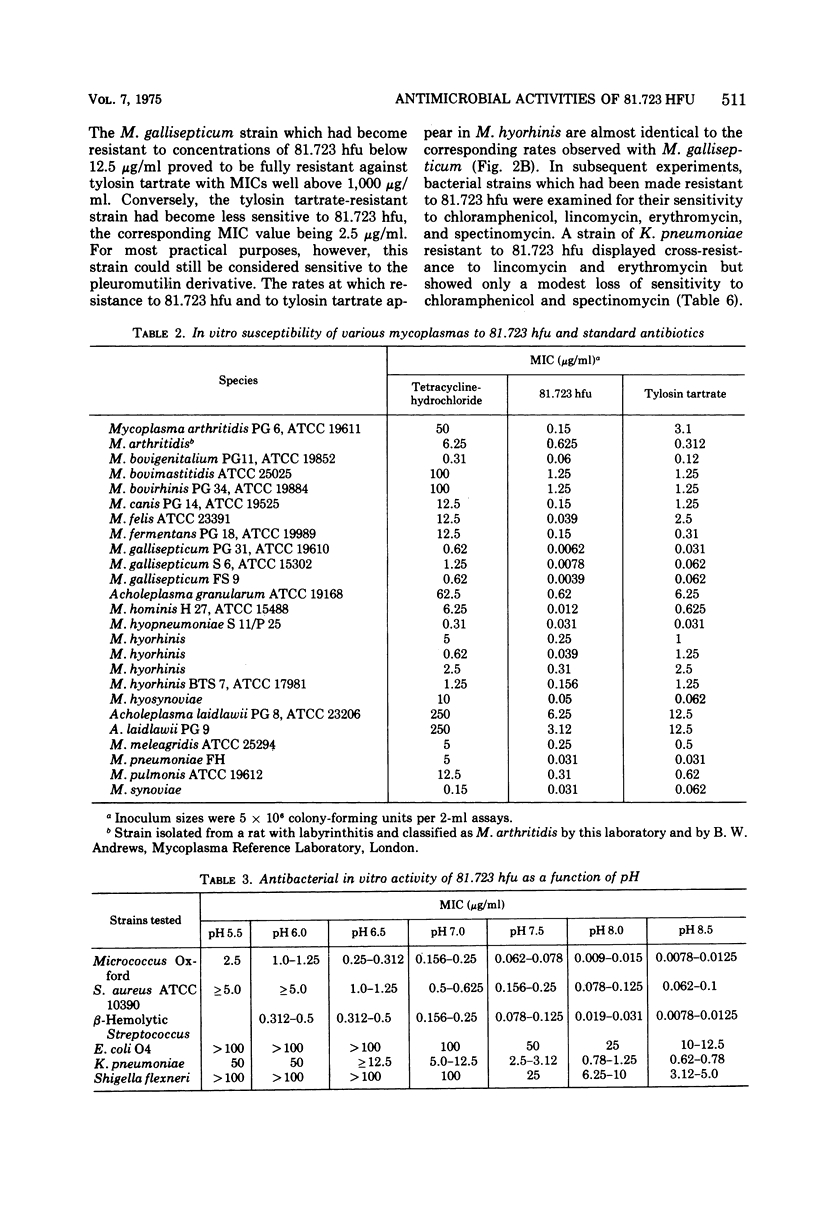
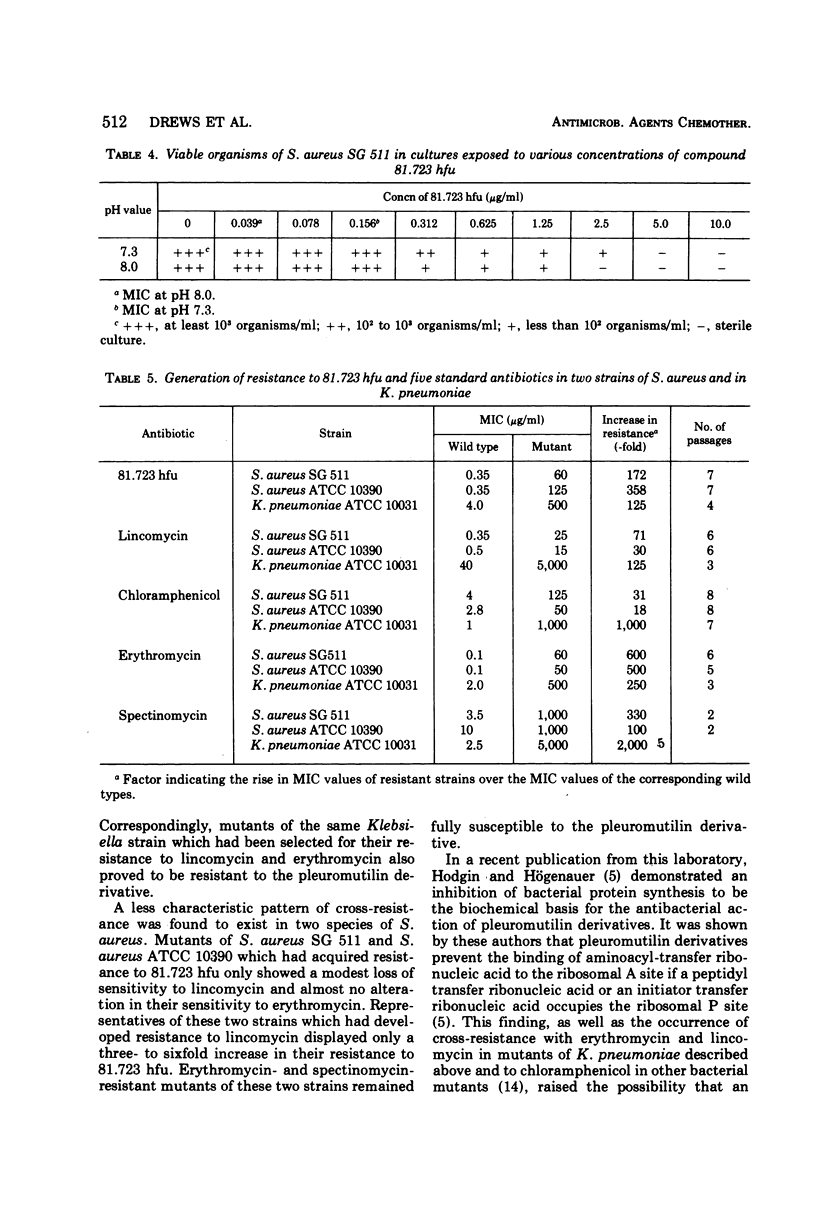
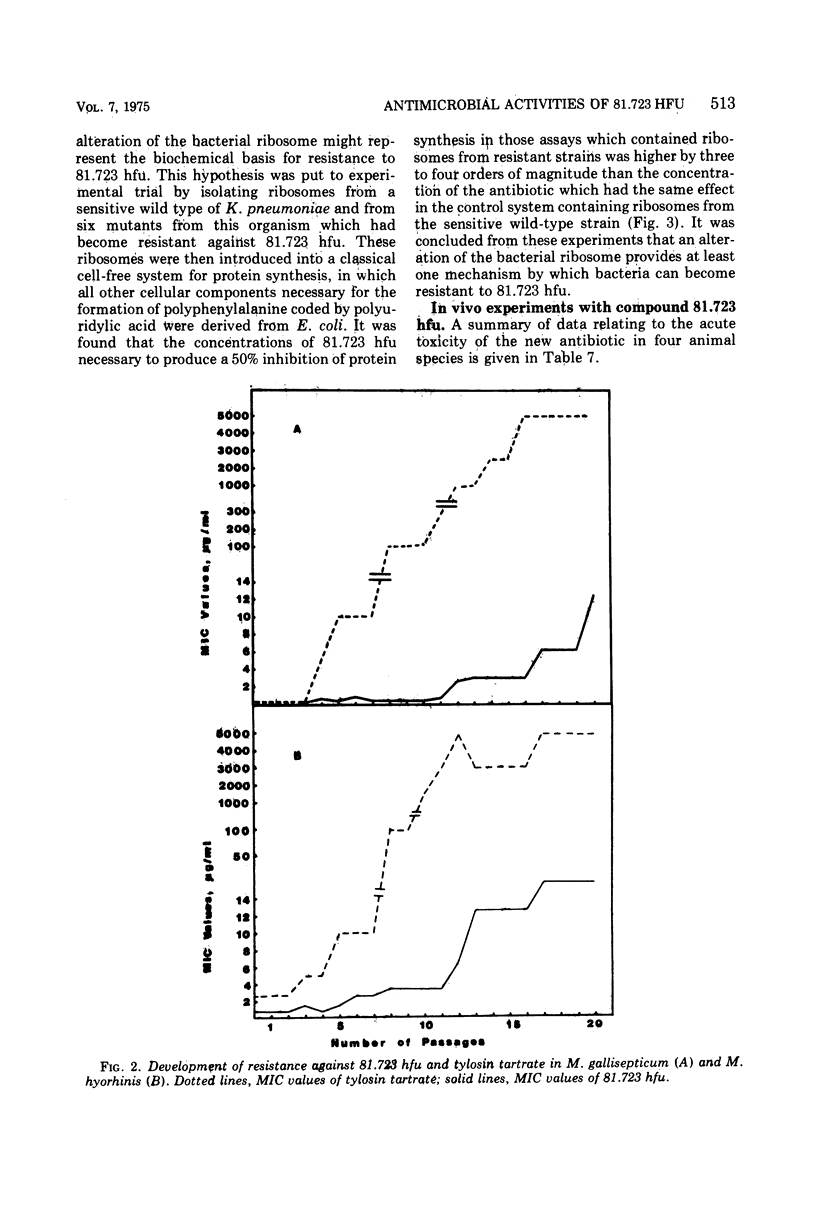
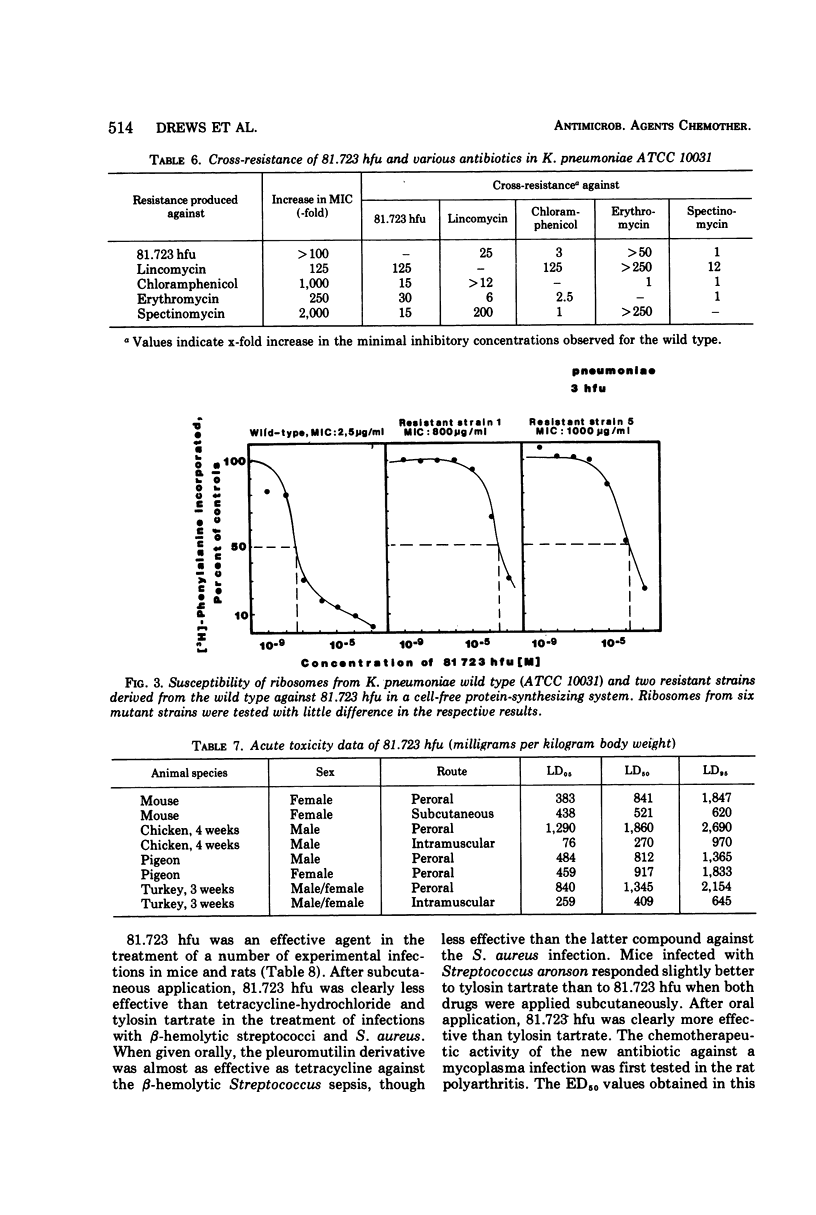


Selected References
These references are in PubMed. This may not be the complete list of references from this article.
- Hodgin L. A., Högenauer G. The mode of action of pleuromutilin derivatives. Effect on cell-free polypeptide synthesis. Eur J Biochem. 1974 Sep 16;47(3):527–533. doi: 10.1111/j.1432-1033.1974.tb03721.x. [DOI] [PubMed] [Google Scholar]
- Kavanagh F., Hervey A., Robbins W. J. Antibiotic Substances From Basidiomycetes: VIII. Pleurotus Multilus (Fr.) Sacc. and Pleurotus Passeckerianus Pilat. Proc Natl Acad Sci U S A. 1951 Sep;37(9):570–574. doi: 10.1073/pnas.37.9.570. [DOI] [PMC free article] [PubMed] [Google Scholar]
- LOWRY O. H., ROSEBROUGH N. J., FARR A. L., RANDALL R. J. Protein measurement with the Folin phenol reagent. J Biol Chem. 1951 Nov;193(1):265–275. [PubMed] [Google Scholar]


